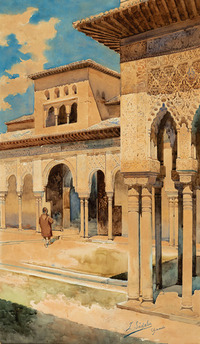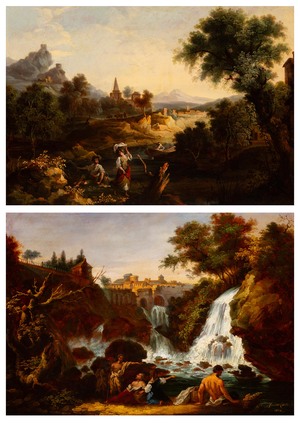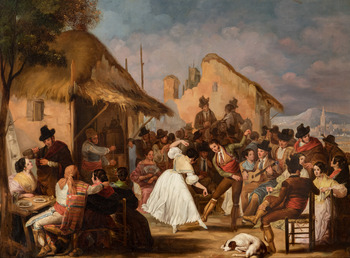Andalusia, cradle of Romanticism
Andalusian genre painting takes center stage at Setdart’s August 31 auction.
Man has always been fascinated by those exotic and distant things, especially by the oriental world. Cultures such as Arabic, Indian or Chinese have always been such an attraction that collectors and travelers have wanted to treasure samples of these cultures in order to display them on their properties in front of a society that saw them as true rarities.
Throughout the 19th century, we could say that milestones were set in terms of increased interest in the exotic and oriental. The invasion of Egypt by Napoleonic troops, for example, led to a veritable Egyptomania throughout Europe. Likewise, Europe itself had an Arab past in the Iberian Peninsula. Andalusia, of course, would be the perfect place to experience the Arab legacy through its monuments such as the mosque of Cordoba, Mudejar houses like Pilatos, or palaces and fortresses like the Alhambra.
Monuments, of course, seem to be the most visible part of the European traveler’s motivation in Andalusia. However, the experience of the trip was much more than that, getting to know the culture itself through its natural landscapes, its traditions and festivities such as processions or fairs, gastronomy, etc.
The Romanticism traveler in 1840 found an Andalusia worthy of being captured in poems or paintings, the vision they would have was not that of the usual bucolic ruins that would be seen by the Italian Grand Tour, nothing to see. Here, bandits, bullfighters, ladies dressed as gypsies or covered with mantillas would have the same impact as the stones of the buildings. The souvenir they used to take with them, to the disgrace of our heritage, were the remains of these monuments, such as the columns or tiles, mostly antiques and paintings that collected them as postcards. But how to proudly show the Andalusian traditions back to old Europe, thanks to the costumbrista painting. Well known Andalusian romantic artists were Andrés Cortés, Manuel Cabral Bejarano and Manuel Rodriguez de Guzmán. They knew like no one else in their time how to reflect the customs and daily life of their land, sometimes falling into the topic, but always with the essence of what must have been a dream Andalusia.
If we stop at many of these costumbrista paintings, we can get a glimpse of how Andalusians lived in the mid-nineteenth century. Its often dilapidated interiors clash with the joy and liveliness of the scene taking place inside. The attire also indicates the way they dressed: caps, berets and hats to protect themselves from the sun, sashes to hide knives, shoes often rickety or even barefoot, and in the case of women even more exciting, jewelry, hairstyles, fans or ruffles on the dresses have such an effect on the paintings that they seem to dance.
These paintings were created in many cases as a souvenir of the Andalusian experience of the romantic traveler who, when they arrived at their new homes, would become the astonishment of the attoned spectators and with it would increase the passion and interest for it until our days. Washington Irving, Manet, David Roberts or Robert Kenm are some examples of those foreigners who fell under the spell of Andalusia. However, it should be remembered that the success of the artists mentioned is not only due to foreign clientele, the Spaniards themselves including the Andalusian bourgeoisie and aristocrats were important patrons of works like these, and the landscapes, monuments, types and scenes were their culture, a perfect way to show their pride in it.








